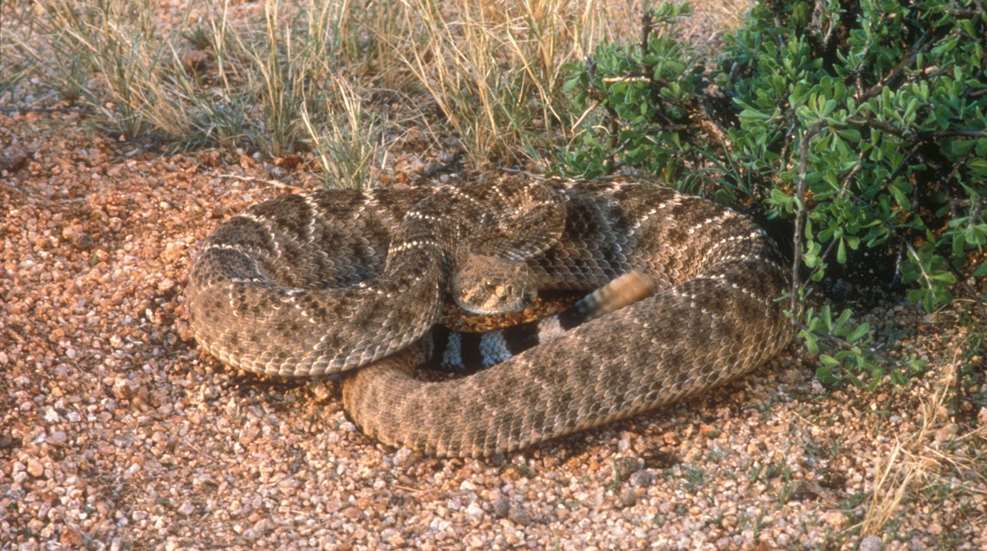
It may not be duck or wabbit season, but as warm weather moves Northward, it’s beginning to be rattlesnake season. In fact, according to the Arizona Game and Fish Department, April is the month when most rattlesnake bites occur in that state … and this year has been no exception. With April not over at the time of this writing, there have already been 39 reported snakebite victims in Arizona alone. As you may know, rattlesnakes live in almost every U.S. state, so if you’re heading outdoors this spring, chances are very good that you’ll encounter one of these “crotalids” (the scientific name for the various species of rattlers).
The good news is that you probably won’t know about the encounter. Rattlesnakes, like all venomous North American snakes, would vastly prefer to avoid you rather than attack you. Venom is a “metabolically expensive” secretion for the snake—it costs them energy to make, and they can only make so much. Generally, they would prefer to save that venom for a critter that’s actually small enough to eat (e.g., not you). But if you find that of little comfort, here are some things you can do to avoid a rattlesnake bite.
Don’t Be Drunk
According to this study from the Western Journal of Medicine, the most common state in which rattlesnake-bite victims are found is “drunk.” Furthermore, it appears that the most common reason for said drunk person to have been bitten is that they attempted to handle the snake. In fact, “Forty percent (12/30) of all subjects were noted to have alcohol use as a factor that preceded the bite. All alcohol-related snakebite victims were nonprofessional unskilled handlers, participating in some form of recreational snake handling.”
Don’t Put Your Extremities Anywhere You Can’t See
The next most likely scenario in which a bite occurs is that a (presumably sober but perhaps inattentive) hiker or hunter accidentally spooks a snake. Although homo sapiens sapiens is definitely not on any rattler’s menu, they will bite if they feel threatened. And having a large, hairless, five-tentacled thing—your hand—suddenly appear next to them while they’re sleeping in a nice woodpile will make them feel threatened. One of the best ways to keep a snake from feeling threatened is to simply keep your hands and feet out of areas you can’t see. This is where a good, sturdy walking stick comes in handy; you can use it to poke around in the rockpiles and deadfalls before you walk through.
Leave it Alone & Don’t Try to Remove it Yourself
Although it’s probably an overstatement to say that rattlers are more afraid of us than we are of them, it’s absolutely true that the snake views us as predators. (As well they should.) So your best bet is to act like a predator that already had a decent meal and isn’t looking for trouble: Slowly back away from the snake, give it a wide berth and continue on your way. An agitated rattlesnake may hold its ground, but wildlife biologists say they’re extremely unlikely to chase you.
Keep an Eye on the Date and Time
Rattlesnakes, as cold-blooded animals, are most active when it’s warm. In southern deserts, rattlesnakes are most active March through October. During the spring, rattlesnakes are most active in the daylight hours. As the days become increasingly hot, usually around early May, rattlesnakes become more active at night. As warm weather moves north, you’ll see approximately the same “window of activity,” only later in the year.
Stay safe out there, and enjoy your time outdoors!















































